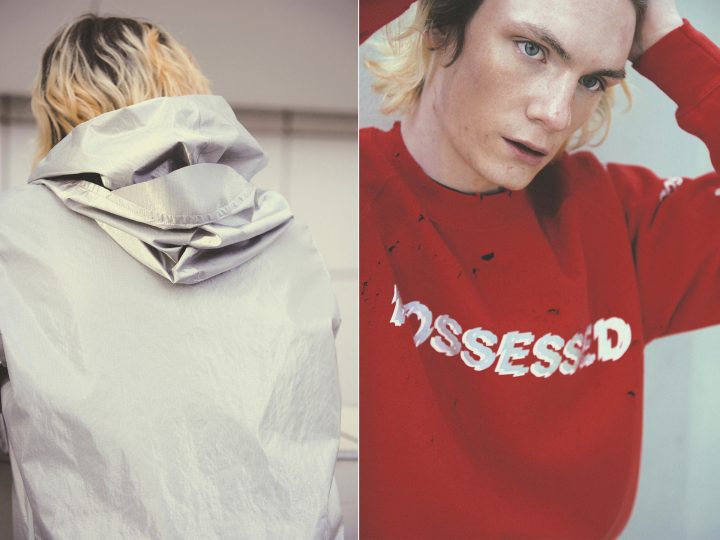For most of the last 15 years, Cali Thornhill DeWitt's name was only known in artistic circles, despite the fact that he's been deep in pop culture's (edgier) inner circle from a very young age. The Canadian-born grows up in the San Fernando Valley, goes on tour with Courtney Love's band Hole as a youngster, even briefly lives in Seattle —working for the royal couple of grunge as Frances Bean Cobain's nanny (plus appearing in drag on the actual cd of Nirvana's 'In Utero' album)— and at the age of 19 he moves to New York City. Two years later he returns to Los Angeles, where he starts working as an A&R at Geffen and eventually co-founds his label Teenage Teardrops, alongside Bryan Ray in 2006 (which now a days also houses a publishing branch and is run by the artist together with his wife Jenna). In this period, halfway the first decade of the 21st century, DeWitt also begins expressing himself visually, soon finding a signature genre of visual poetic work, which we feel could be best described as Gangster Holzer, also strongly reminding of the inspirational work of Eike Koenig. From that period on the multitalent has been creating a diverse field of output: from music video's, album artwork, photography projects to radio shows and numerous publications — establishing himself as an artist with the cool of a rock star, always pushing himself in finding new areas for his artistic expressions.
We fast-forward to 2014, when DeWitt creates a sweater for his friend Joerg Koch, founder and editor-in-chief of 032c. After having been a respected name in the LA art scene for about a decade, showing his work all over the globe, it is then that the name Cali Thornhill Dewitt would transcend its familiarity in just the art world, entering the pop cultural realm. DeWitt's present to Koch is one of the artist's creations inspired by the memorial sweaters worn mostly by Mexcian-Americans after a beloved family member or friend has passed away, which DeWitt had been creating for his art shows before, sporting his poetry in signature gothic letters on the back and front. For Koch he creates a commemoration to the late troubled actress Romy Schneider, because of their shared nationality. At the time, the leading German culture magazine is in the middle of getting its merchandise operation going, and Koch decides that he likes the sweater so much that a small run is reproduced for sale (including the typo in the German text). Today it's in its third (or fourth?) run, available at high end web-boutique ssense (before selling out, again) where Koch is editor-in-chief since 2015, and even though the sweater being not as scarce as it once was: it's still worn by some pretty cool people.
Some months after the Romy Schneider sweater is first released by 032c, another wearable creation of DeWitt becomes a prop in pop cultural history, when Kanye West wears a oversized 'DONDA' sweater to that launch of Jay-Z's music streaming service Tidal in March of 2015. Although at that time very few know that DeWitt has created that particular sweater, it forms the official start of the extensive collaboration between pop culture's current loudest (and most ambitious?) voice and the Canadian artist, so far including a commemoration to Kobe 'Mamba' Bryant and several complete 'collections' of The Life of Pablo merchandise, having had site specific pop-up sub-items all over the world in 2016. And although, even today, probably less than more people actually know who's the artistic visionary behind their much-hyped Pablo sweater, the name of Cali Thornhill DeWitt can be found all over the internet's pop corners since last year — for the first time making him somewhat alike the people he has been so close to since his teenage years (although maybe even being nolens volens...)
Fortunately his new status hasn't stopped the artist in putting his own projects (it probably helped/will help in the future) out in any way, with a new exciting body of work being presented at Copenhagen-based gallery Eighteen next Thursday the 13th of October. Named '29 Flags' the exhibition takes its departure in recent American history, with a prominent role for its most famous icon: the Stars & Stripes. The series consists of 29 vintage USA flags, with flock lettering, in various sizes and from various time periods and places. Each work refers to a specific iconic events in American (cultural) history; from the death of Marilyn Monroe, The Waco siege, Elvis comeback concert, The cult of the Manson family, Traci Lords’ underage porn, The Unabomber to the trial of O.J Simpson. [ Continue reading ]

















